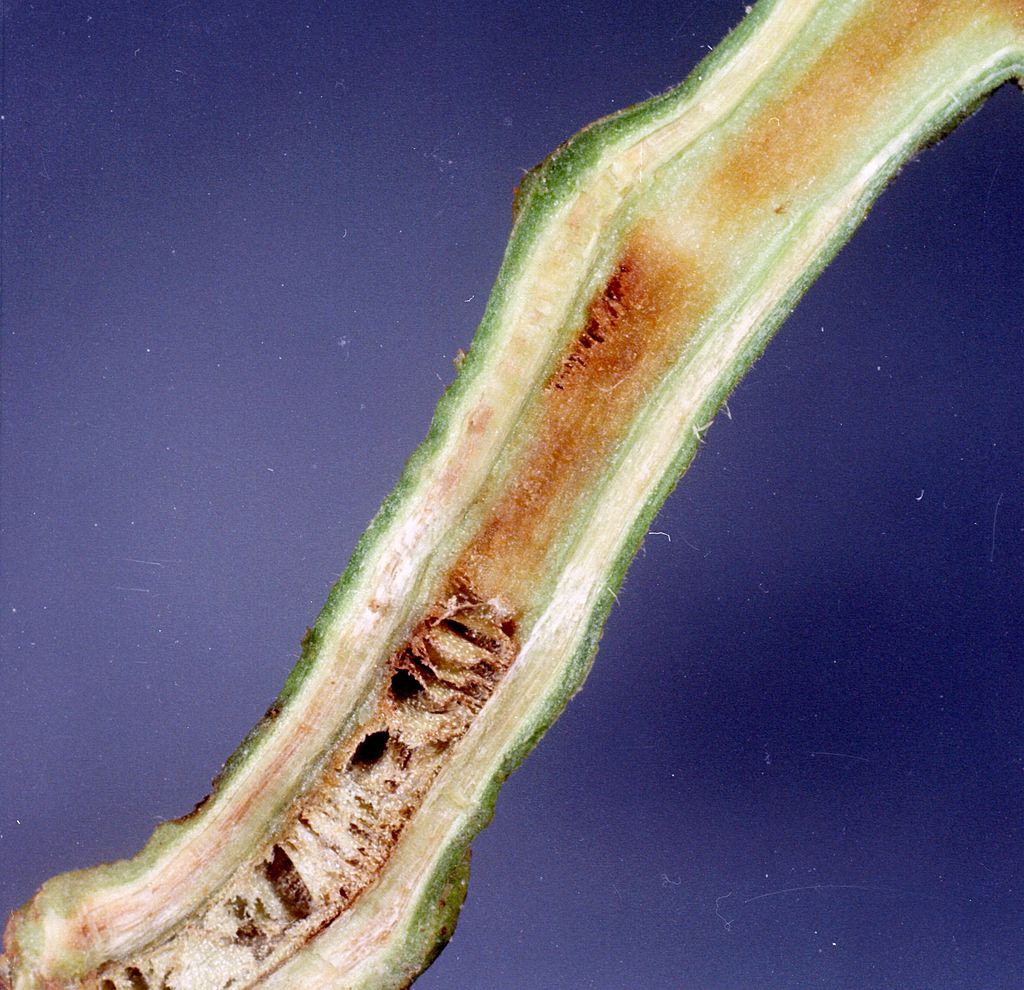
Southern bacterial wilt of tomato is a soil-borne disease caused by the bacterium, Ralstonia solanacearum. It also affects many other plants in the nightshade family (Solanaceae), including potato, eggplant, pepper, and tobacco and is particularly prevalent in warm areas with moist sandy soil and high humidity, such as the southern United States, Central and South America, and Africa. The bacterium can survive in the soil for long periods of time and infects plant roots by entering through microscopic wounds but can also be introduced by tools or water carrying the pathogen. Once in the plant, the the bacterial cells multiply and clog the vascular system with bacterial cells and slime so that neither water nor nutrients can be moved to all parts of the plant. Photo Credit Clemson, Wikipedia
The symptoms of the disease usually appear in mid summer when the temperatures are over 85 F and the soil is moist. Typically, the symptoms develop on the lower leaves of the plant first but can quickly spread to the entire plant. The leaves wilt and turn yellow, and the plant may become stunted and eventually die. In addition, the stem of the plant may exhibit dark, brown discoloration, first in the vascular system, spreading to the cortex and pith in advanced cases. The disease can be diagnosed by suspending one end of a short piece of stem in a glass of water. Within 3-5 minutes a whitish slime of bacterial cells will flow from the xylem into the water if the disease is present.
Control:
- Remove infected plants immediately and dispose of them to reduce the spread of the bacteria.
- Wash tools, hands, and clothing that may carry the disease.
- Use a 3 year crop rotation scheme with crops from other plant families
- Use resistant varieties
- Avoid working with wet plants
NB There are no chemical controls for the disease.